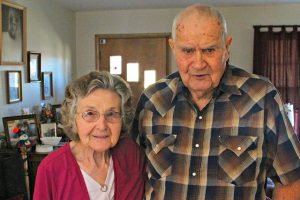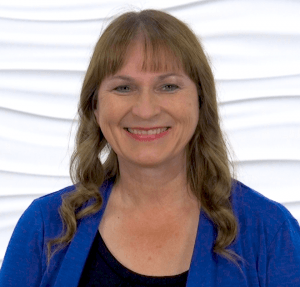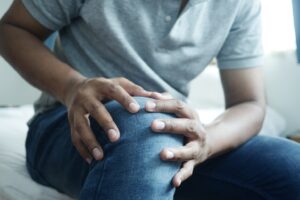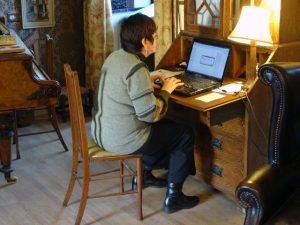Dr. Mauk’s Boomer Blog
Each week, Dr. Kristen Mauk shares thoughts relevant to Baby Boomers that are aimed to educate and amuse.
Dr. Kristen L. Mauk, PhD, DNP, RN, CRRN, GCNS-BC, GNP-BC, FAAN
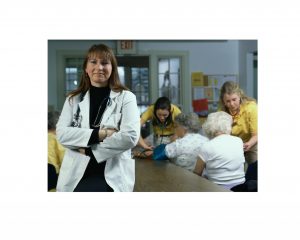
Guest Blog: A Solid Rehab Approach for the Elderly
Unfortunately, addiction doesn’t just stop in one place and stay there. It can affect many people across all walks of life. It happens to any person, of any age, in any area, in any place of their life. This is why it is important to note those rehabs that specialize in rehab care for the elderly.
With over 40 million seniors aged 65 or older living in the country, it is no wonder that some of them do have an addiction issue. With so many seniors, many of them have taken prescription pills for one health issue or another. As a leading cause of substance abuse in the country, seniors are not exempt from this addiction.
In fact, seniors are more likely to be prescribed these medications and more likely to abuse them than any other age group. This is because they are oftentimes forgetful, may feel like they haven’t taken enough, do not realize they are taking too much, or any number of other reasons.
Rehab for these seniors addicted to these medications will be needed.
Addiction in Seniors
Many find it surprising that so many seniors are addicted to medications. Isolation and loneliness tend to be the most common issues for addiction in older adults, especially those abusing alcohol or other drugs.
This type of addiction needs to be addressed in a specific setting and in a specific way. Not only should the root of the problem, such as the loneliness, be addressed, but the specific person should understand that they have a problem. Even though they are older, it doesn’t mean that they shouldn’t get help.
An addiction rehab with specialists that are trained in senior rehab is required. This is a rehab center that can speak with the senior, understand why they are using or abusing the substance, and then find the best course of action to take regarding their treatment plan.
Seniors, just like the rest of us, are susceptible to addiction. Due to this, it is important to check in on those that are close to you to make sure that they do not feel the need to use. You want to help them when it is needed, visit with them, and let them know you are there. Rehabs for seniors, and others that have drug abuse issues are out there, but it shouldn’t have to get this far.
Clinical Nurse Specialist Profile – Dr. Kristen Mauk
Kristen Mauk has never been one to stop learning. The clinical nurse specialist has nearly 30 years of experience in rehabilitation and gerontology, a handful of degrees, and has authored or edited seven books. She now helps train the future generation as a professor of nursing at Colorado Christian University in Colorado. She also recently launched her own business, Senior Care Central/International Rehabilitation Consultants, which provides nursing and rehabilitation education throughout the world.
Question: What drew you to nursing? What do you enjoy about it?
Mauk: “I grew up in a medical family. My father was a pediatric surgeon and my mom was a nurse, so I was always around the healthcare professions. However, nursing offered so many opportunities for growth and change while doing what I loved — helping others. There are many aspects of nursing that I enjoy, but feeling like I help make peoples’ lives better has to be the best perk of the job. Nursing is a versatile profession. I started off my career as an operating room nurse, worked for a decade in med-surg, geriatrics, and rehabilitation, then eventually went back to school for additional education so that I could make a greater impact on healthcare through teaching nursing students.”
Question: You have an impressive education. Why did you continue to pursue advanced degrees in the field? How has that benefited you?
Mauk: “First, I am a life-long learner, something that was instilled by my father who was always encouraging his children to explore the world and have an inquiring mind. Dinners at my house were filled with learning activities such as, ‘How does a flashlight work?,’ ‘What is a group of lions called?,’ or ‘For $20, who can spell hors d’oeuvres?’ (By the way, I got that $20!) So, continuing my education through studying for advanced degrees seemed a natural progression when you love to learn and love your work. I felt a need to know as much as possible about my areas of interest, gerontology and rehabilitation, so that I could provide better care to patients and be a better teacher for my students. My advanced education has?opened many doors in the professional nursing world, such as the opportunity to write books, conduct research to improve the quality of life for stroke survivors, or hold national positions in professional organizations.”
Question: What’s one of the most memorable experiences you’ve had, either as a student, educator or in your practice?
Mauk: “There are many memorable experiences I’ve had both as an educator and in practice. One of the most memorable from practice was early in my career working on a skilled/rehab unit in a little country hospital in Iowa. There was an older man who couldn’t find a radio station that played his favorite hymns and one of my co-workers knew that I had a musical background and asked me to sing to him at the bedside. I timidly held his hand as he lay in his hospital bed, and with the door closed because it was late at night, I softly sang all the old hymns I could remember. He closed his eyes and smiled, clasping my hand for nearly an hour of singing. The next evening, I heard him excitedly tell his family members that ‘an angel visited me last night. She had the sweetest voice I’ve ever heard. She held my hand and sang all of my favorite hymns!’ Hearing that outside the door, I smiled, but was later surprised when I stopped in to see him that he truly didn’t seem to remember me. One day later, he died unexpectedly. I often look back and wonder on that experience. In the many years of nursing experience that followed, I have learned that there are sometimes angels where we least expect them.”
Question: What advice do you have for people just starting their education or their professional career?
Mauk: “Nursing is a great profession! Learn all that you can while you are in school and continue to be a lifelong learner. The need for nurses who specialize in care of older adults and rehabilitation is only going to continue to grow because of the booming aging population. There is currently, and will continue to be, a shortage of skilled professionals to meet the demand that is looming with the graying of America. Gain skills that will make you a specialist and afford you additional opportunities. Always give the best care to those you serve. Set yourself apart by building a professional reputation for excellence through advanced education, publication, scholarship, clinical practice, and community service. Then, go and change the world!”
CLINICAL NURSE SPECIALIST PROFILE FOR KRISTEN MAUK
Guest Blog: Everything You Need to Know About Cosmetic Dentistry in 2020
Unfortunately, one of the perils of ageing manifests in your teeth. Several oral issues present themselves in most seniors because it is common for your pearly whites to deteriorate with time. Weakening ligaments around the mouth and jawbone density loss due to age create teeth misalignment. Apart from normal wear and tear, genetics, oral hygiene habits, and food choices also impact how your teeth look.
As such, it is customary to see cracks, chips, stains, or discolorations in seniors. You may also encounter teeth and gum sensitivity. The worst-case scenario is missing teeth which affects your smile and self-confidence. However, just because you’re older doesn’t mean you are doomed to have missing, damaged, or discolored teeth for the rest of your life. Thankfully, cosmetic dentistry can restore your glorious smile and youthful glow. Take time to understand this unique practice and how it can significantly improve your life. Let’s get started!
Who Needs Skills of Cosmetic Dentistry
If you feel insecure facing the mirror because you’ve got broken teeth, then it is high time to consider going to a cosmetic dentist. Getting oral procedures will restore your teeth and face shape. As a result, you will feel more confident once again. With the aid of a reputable practitioner, you can speak and smile with ease.
Best of all, the right dental procedures will also alleviate your pain and discomfort. Sometimes, you’ll find it difficult to chew because of crooked, broken teeth. If you get these issues fixed, you can enjoy your food even more. Take a look at the following cosmetic dental procedures below and check to see if they are right for you:
Composite Bonding
If you have gaps cracks, and chips, composite bonding is an excellent fix. Your dentist will use the composite fillers for the spaces and crevices. Composite resins are the same shade of your natural teeth. Depending on the severity of your issue, you may need a single visit or more.
Dental Veneers
Veneers cover the same issues as bonding, but they are better and last longer. They also camouflage flaws like an ugly tooth shape and stains. Depending on your budget, you can go for plastic or porcelain veneer shells. Your dentist takes a mouth impression, buffs existing teeth, and cements the veneers into place.
Teeth Whitening
If you smoke, consume tea or coffee, and take certain medications, you may have bad teeth discolorations. You can whiten it with chemicals in the dental clinic, or you can try a home whitening system. This process exposes your teeth to peroxide so watch out for sensitivities. As such, steer clear from too cold or too hot food and beverages.
Crowns
Some call this a dental cap because it will cover your entire tooth. It comes in metal, resin, ceramic, or porcelain. It restores the look and shape of your damaged tooth. With proper care, it will last for a very long time. You may need a crown for the following:
- Fill a large hole
- Hold a dental bridge in place
- Cover a root canal
Implants
It is the most natural and permanent procedure; however, it is also the most invasive and expensive. It is an excellent long-term solution to replace missing teeth. You will need a qualified oral surgeon to drill the implant into your gums and jawbone. It will look very natural, but it comes at a high price.
Advantages of Cosmetics Dentistry
Getting cosmetic dental procedures will help improve the quality of your life. A famous Orthodontics in Barnet dental practice shared that when you look good, you feel good. With a brilliant smile, you’ll have more confidence to face the world. But more than vanity, getting your teeth fixed is a necessity because of the following:
- It can improve the way you speak because your teeth and tongue work together in making the proper sounds.
- Nice teeth improve your bite, lessening jaw fatigue and preventing further deterioration.
- Cures various dental problems, so you alleviate pain and discomfort.
- It influences your appetite because you can chew well.
Remember, as a senior, the state of your teeth matters because you need optimal nutrition to boost immunity. The first stage of digestion takes place in your mouth. As such, your teeth must be in good condition to break down your food for better nutrient absorption.
When you opt for cosmetic procedures, you can select from a broad range of treatments that use varying techniques. Ask your dentist for advice to find out what approach best suits your budget. Best of all, you can opt for non-invasive treatments if you feel scared and dread any form of downtime.
How to Choose the Perfect Dentistry for You
When you’re choosing the best cosmetic dental practice, keep in mind that the lowest price is not always the best choice. There are many cosmetic dentists in town, but not all of them are made equal. Consider the following points when you are looking for the best cosmetic oral care provider:
- Check their license, experience, and education. Keep in mind that cosmetic dentists need further training and certifications.
- Peruse the clinic to check prices, evaluate hygiene, and examine equipment. You want to work with a clinic that makes you feel comfortable.
- Choose caring staff that accommodate your questions because they will help you quickly in case of a dental emergency.
- Read online testimonials to see client reviews. They are your best bet when it comes to finding the best cosmetic dentist. Some even go so far as to share before and after photos so you can see results.
Final Word
You don’t have to be stuck with ugly teeth forever. Speak with a qualified cosmetic dentist about the risks and perks of various procedures to restores your smile. When you’re unhappy with your teeth, the only person who can help is your dentist.
However, you must research to find the best one you feel comfortable. When you hand over your health to someone, you need to make sure you can trust this person.
Finally, before you make a decision, discuss your options. By doing your due diligence, you can be well on your way to get that brilliant smile you’re craving for it.
Guest Blog: 5 Pain Management Tips for Elders Dealing with Knee Pain
Knee pain is a common ailment for older adults. Unfortunately, the swelling and stiffness that lead to this condition can stop patients from performing daily routines. Here are five pain management tips for elders with knee pain.
An inactive lifestyle can contribute to pain and inflammation in the knee. On the other hand, regular exercise can help keep the muscles that support the knee joint strong and flexible. Try doing low-impact activities such as walking, swimming, or biking. Always increase the intensity of your workout gradually. Stop if your knees hurt.
Ice Packs and Heat Therapy
Applying ice packs to the affected area can reduce swelling and inflammation. Use an ice pack for 10-15 minutes every 2-3 hours for the first 2-3 days. Then reduce the frequency and duration of use over time. Apply heat to the knee using a heating pad. You can also apply a warm, moist towel to the knee several times daily to reduce pain and stiffness.
Medication
Over-the-counter medications such as aspirin and ibuprofen can help reduce inflammation and pain. However, these medications should be given under a physician’s prescription. Talk to your doctor about the best treatment option for you.
Maintain a Healthy Weight
Weight gain can increase the pressure on the knee joint and lead to pain and discomfort. Maintaining a healthy weight through diet and exercise can help relieve this pressure and keep the knee joint healthy. See your doctor to help you develop a weight-loss plan tailored to your needs and goals.
Massage Therapy
Massaging the knee joints can also help improve the flexibility and mobility of the knee and promote healing. This is especially useful for individuals recovering from injury or surgery. A physical therapist will apply gentle pressure to specific body areas to promote relaxation and encourage blood flow. Studies have proven that massage therapy can help reduce pain and improve joint function in people with arthritis and other inflammatory conditions.
Knee Joint Pain Remedies
If you are experiencing knee pain, many remedies are available to help ease and improve your mobility. Below are some tips to help improve your overall health and reduce knee pain.
Rest
Rest sore joints as much as possible. Avoid activities that cause pain when your knee is painful or swollen. This can help reduce inflammation and relieve some of the pain. Rest for at least a few days to allow your knee joint to heal. In the meantime, try to keep the knee in as straight of a line as possible.
Acupuncture
This is a clinically tested procedure involving inserting fine, sterile needles into the skin at specific points that correspond to different body systems. Regular acupuncture sessions can reduce pain and improve the range of motion.
Compression Bandage
Compression bandages are also known as elastic knee bands. Wearing a compression bandage can help reduce swelling in your knee and improve mobility. The bandage also provides support to help keep the joints stable and prevent further injury.
Stretches
Stretching can also help to improve flexibility and reduce pain. One stretch that is particularly effective for knee pain relief is the quadriceps stretch. It involves straightening one leg and bending the other at the knee so that the shin is parallel to the ground. Keep your back straight as you hold the stretch for 20-30 seconds, and repeat with the other leg.
Aromatherapy
Massaging oils such as eucalyptus into the knee joint can also relieve pain and stiffness. Essential oils containing cinnamon, sesame, orange and ginger can help reduce pain caused by osteoarthritis. They may also improve flexibility and functionality in the knees.
When to Seek Medical Advice?
If the pain persists for more than one week or worsens over time, you should make an appointment with your doctor so they can help diagnose and treat your pain. You may also want to visit your doctor if you experience redness, swelling, muscle weakness, or when you can’t put weight on your knee. Your doctor will examine your knee for mobility, flexibility and general functionality. MRI/CT or X-rays scan can help identify injuries or deformities. Occasionally, your doctor may need a small amount of joint fluid for testing.
Knee pain can cause discomfort and prevent you from doing daily routines. Thankfully, the above tips can help you overcome pain and discomfort in your knees.
Guest Blog: Telehealth for Seniors: 7 Things You Need to Know
Telehealth is changing the way we visit the doctor, and how seniors experience long-term care. COVID-19 has made telehealth a necessity for seniors, both for regular doctor visits, and for those in long-term care. Patients are more likely to suffer from diabetes as they age, and studies have also shown that patients with underlying diabetes complications are at an especially high risk for contracting COVID-19.
By communicating with medical professionals over a video-conferencing tool – like Skype or Zoom – seniors and long-term care staff can avoid unnecessary trips that might expose patients to COVID-19. And although it’s still early days, many studies indicate that telehealth is good for both doctors and patients, even for complex issues like wound care.
Why have I heard so much about telehealth and telemedicine lately?
The 2020 CARES Act expanded Medicare coverage of telemedicine, in part to address the concerns of patients who It’s one of the measures taken to prevent unnecessary exposure to COVID-19.
Telehealth and telemedicine — What’s the difference?
These terms are often used interchangeably. Telehealth is the umbrella term, and telemedicine refers specifically to treatment provided remotely.
Can telehealth deliver the same level of wound care as an in-person doctor visits?
Multiple studies indicate that patients receive the same level of care using telemedicine. This is especially true of patients who add telehealth applications to their pre-existing doctor-patient relationships.
Do I need special equipment?
Everything you need is right there on your smartphone or desktop. In general, you need access to a secure internet connection and audio-visual communication. And in some cases, audio or text alone will suffice.
Who pays for my telehealth appointment?
Medicare covers telemedicine in the event of an established patient-doctor relationship. The CARES Act also has an amendment that allows Medicare to waive this requirement. Many private insurance plans cover telemedicine as well. And in good news all-around, advanced wound care can significantly lower the overall cost of care.
Is telehealth new?
Telehealth isn’t new, just recently expanded. You’ve probably used it without realizing it, via an online portal that your doctor office. It’s also been in use for years in rural areas, where many residents live too far from doctors to receive adequate health care from in-person doctor visits alone.
What are the advantages of telehealth?
Aside from wound care, telehealth can provide easier access to a wide spectrum of health services. Seniors in long-term care shouldn’t have to sacrifice their mental health needs in order to avoid exposure to COVID-19, and telehealth is helping more seniors access mental health professionals. Remote monitoring is advantageous to patients who need regular health monitoring, including those recovering from a stroke. Telehealth can also provide handy reminders to take medication.

